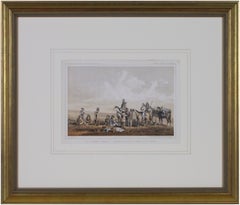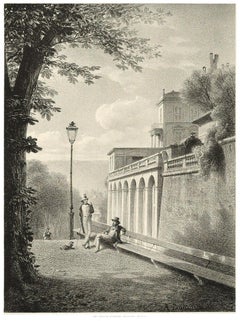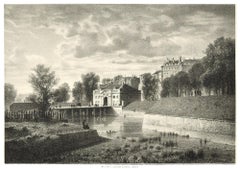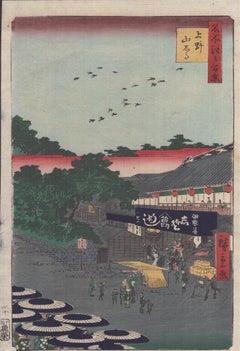1850s Landscape Prints
to
13
97
23
1
1
1
Overall Width
to
Overall Height
to
52
3
2
1
16
9
7
6
3
1,010
2,152
9,942
4,029
117
114
693
515
594
1,139
1,460
1,648
1,311
622
658
101
22
82
32
23
16
16
15
14
13
13
12
9
8
8
7
5
5
5
5
4
4
79
17
17
16
10
5
75
44
36
Period: 1850s
'Lieutenant Crovers Despatch – Return of Governor Stevens to Fort Benton'
Located in Milwaukee, WI
In the mid-nineteenth century, the United States government set out to survey and document its newly acquired lands and territories west of the Mississippi. The goals of these surveys were manifold: to produce topographical maps, to document flora and fauna, and to document natural resources to build the emerging US economy. These surveys, and the images from them, also functioned to build the new sense of American identity with the landscape, condensing vistas into the 'picturesque' tradition of European image making. Thus, the entire span of US territory could be seen as a single, cohesive whole.
This lithograph comes from one of six surveys commissioned by the Army's Topographic Bureau in 1853, which sought to find the best route to construct a transcontinental railroad. The result was a thirteen-volume report including maps, lithographs, and technical data entitled 'Explorations and Surveys to ascertain the most practicable and economical route for a Railroad from the Mississippi river to the Pacific Ocean.' In particular, the print comes from the northern survey, commanded by Isaac Stevens, which explored the regions between the 47th and 49th parallels.
5.75 x 8.75 inches, image
6.5 x 9.25 inches, stone
17 x 20 inches, frame
Artist 'Stanley Del.' lower left
Entitled 'Lieutenant Crovers Despatch – Return of Governor Stevens to Fort Benton' lower center margin
Publisher 'Sarony, Major & Knapp. Lith.s 449 Broadway N.Y.' lower right
Inscribed 'U.S.P.R.R. EXP. & SURVEYS — 47th & 49th PARALLELS' upper left
Inscribed 'GENERAL REPORT — PLATE XXXVII' upper right
Framed to conservation standards using 100 percent rag matting with French accents; glazed with UV5 Plexiglas to inhibit fading; housed in a gold reverse ogee moulding.
Print in overall good condition; some localized foxing and discoloration; minor surface abrasions to frame.
John Mix Stanley...
Category
Romantic 1850s Landscape Prints
Materials
Lithograph
Interieur de Geneve. Un Coin De La Treille - Lithograph by A. Fontanesi
Located in Roma, IT
Image dimensions: 15.3 x 20.8 cm.
This splendid lithograph Interieur de Geneve. Un Coin De La Treille is part of the series of 20 prints dedicated to views of the city of Geneva, en...
Category
1850s Landscape Prints
Materials
Lithograph
Interieur de Geneve. Porte Neuve - Lithograph by A. Fontanesi
Located in Roma, IT
Image dimensions: 15 x 22 cm.
This splendid lithograph Interieur de Geneve. Porte Neuve is part of the series of 20 prints dedicated to views of the city of Geneva, engraved by the ...
Category
1850s Landscape Prints
Materials
Lithograph
Hiroshige (1797-1858) - Ueno Yamashita
Located in BRUCE, ACT
Artist: Utagawa Hiroshige (Hiroshige Ando 1797-1858)
Title: No.12 Ueno Yamashita
Series: One Hundred Famous Views of Edo (名所江戸百景)
Size: O-ban 大判
Age: 1858
Category
1850s Landscape Prints
Materials
Woodcut
$3,710 Sale Price
30% Off
Boston
Located in Missouri, MO
John William Hill (1812-1879)
"Boston" 1857
Hand-Colored Engraving
Site Size: 29 x 41 inches
Framed Size: 39 x 52 inches
Born in London, England, John William Hill came to America with his family at age 7. His father, John Hill, was a well-known landscape painter, engraver, and aquatintist. John William had a career of two phases, a city topographer-engraver and then, the leading pre-Rafaelite school painter in this country. Employed by the New York Geological Survey and then by Smith Brothers...
Category
Pre-Raphaelite 1850s Landscape Prints
Materials
Engraving, Aquatint
Price Upon Request




